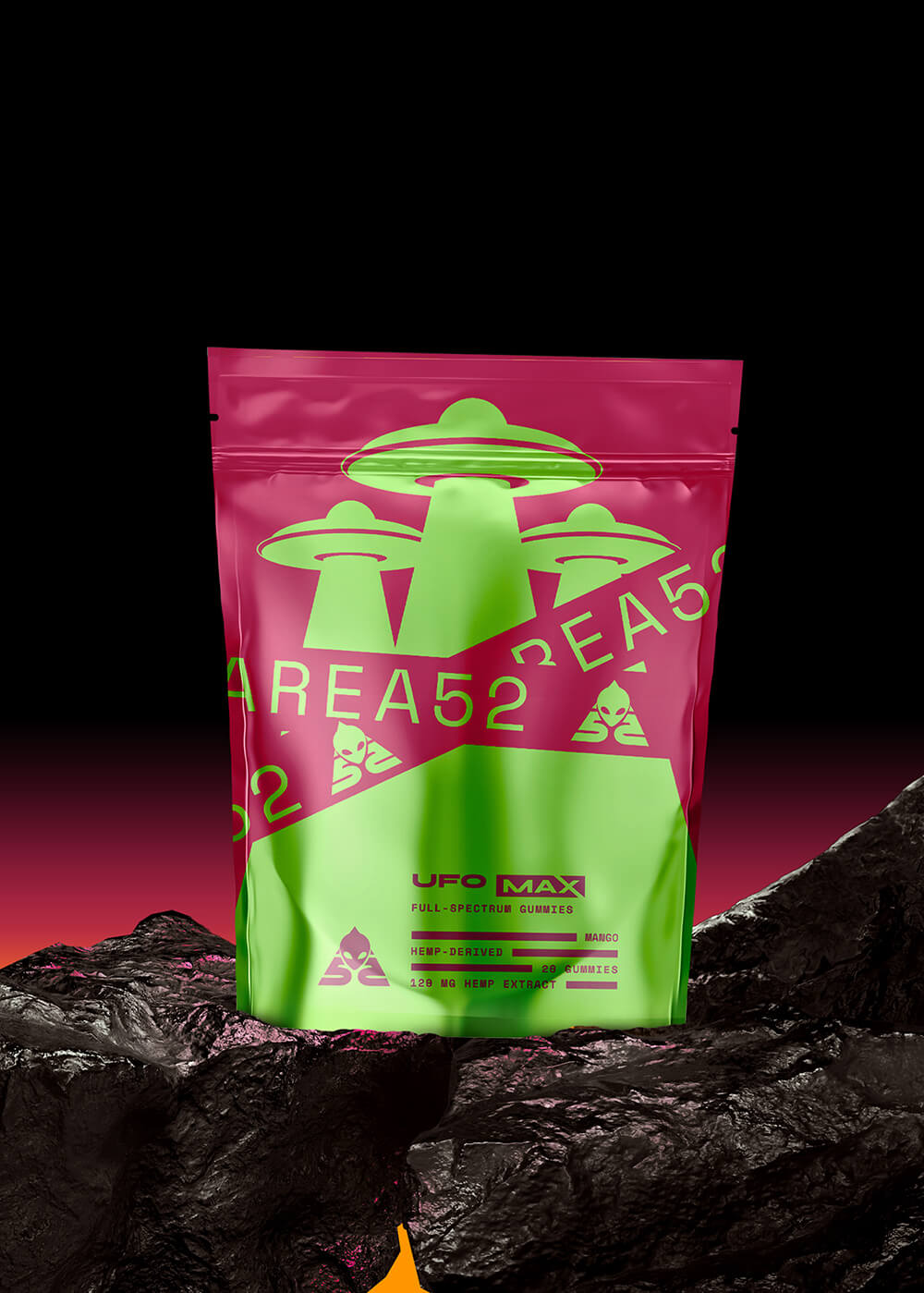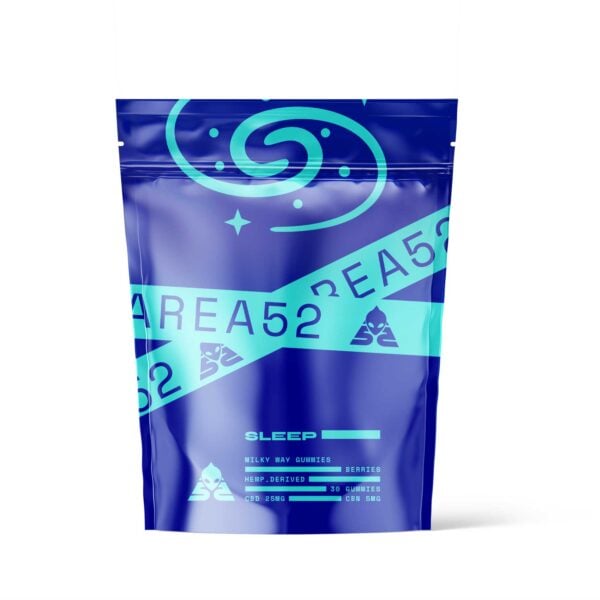Cannabis Hyperemesis Syndrome (CHS): Cause & Treatment
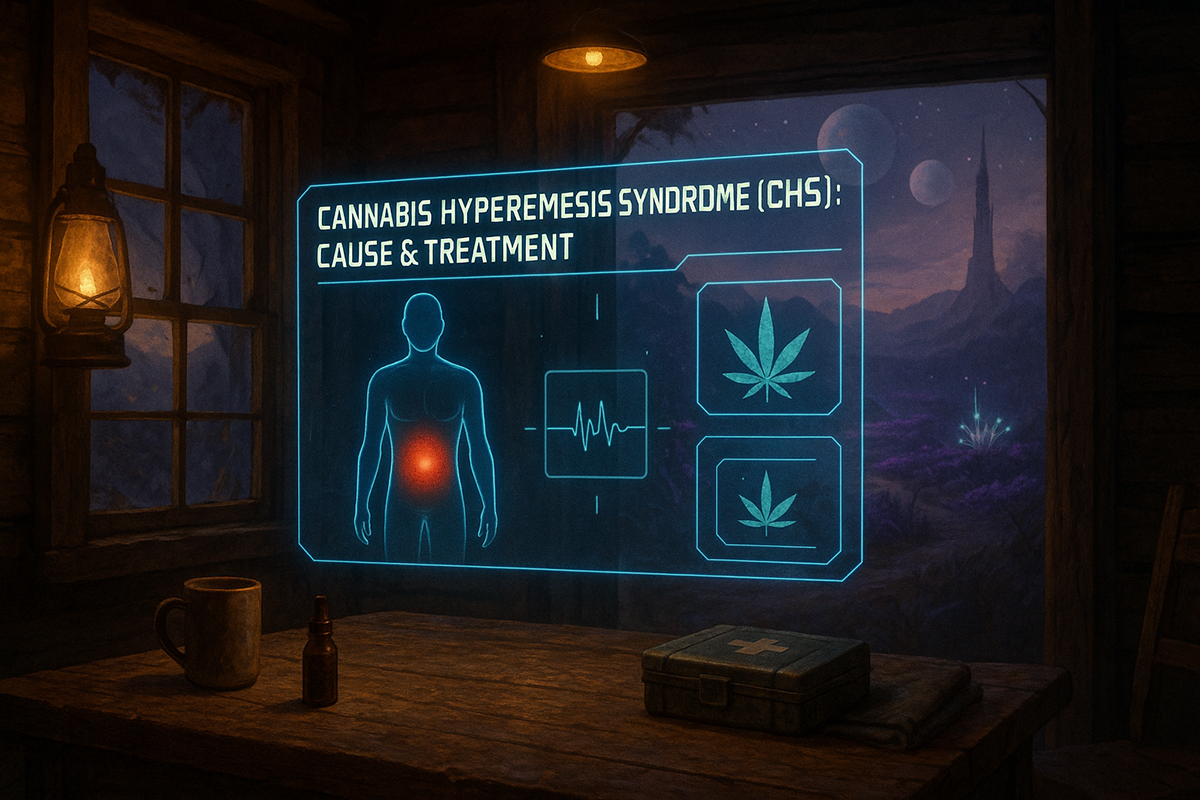
One of the inclusion criteria for medical marijuana patients is severe nausea and vomiting.
However, in some people, cannabis does the opposite. Instead of relieving symptoms, some cannabis causes severe, frequent vomiting with ongoing, cyclical nausea and abdominal pain.
This rare condition is called cannabis or cannabinoid hyperemesis syndrome (CHS).
So, what is CHS, and what causes it? More importantly, what can you do to relieve the symptoms and prevent them from reoccurring?
What is Cannabis Hyperemesis Syndrome?
Cannabis hyperemesis syndrome is a new type of disorder, having only been discovered in the mid-2000s. The episodes of nausea, severe vomiting, and belly pain come on strong and are recurrent.
The symptoms are also sometimes so severe that it means a visit to the emergency room. According to a 2019 study published in the British Medical Journal, CHS’s severe, recurrent vomiting episodes make up about 6% of emergency room visits.
What makes the condition perplexing is that hot showers or hot baths typically relieve the symptoms. The symptoms also disappear after quitting cannabis and reappear when you start using cannabis again.
The cannabinoid hyperemesis syndrome symptoms are almost similar to cyclic vomiting syndrome, especially the severe cyclic vomiting episodes [10]. However, they’re two different conditions. CHS is related to heavy and chronic marijuana use, while the latter doesn’t have a single, specific cause, although problems with the brain-gut axis, autonomic nervous system, and mitochondrial DNA seem to play a role [11].
How Common is Cannabis Hyperemesis Syndrome?
The exact reason why CHS occurs remains unknown. However, this condition of repeated nausea and prolonged vomiting seems to be more common in heavy, chronic cannabis users.
According to the Substance Abuse and Mental Health Services Administration, marijuana is the most commonly consumed illicit drug in the US, with 43.6 million Americans aged 12 and older using it [12]. It’s estimated that around 2.75 million Americans visit the emergency department yearly due to CHS [13].
A 2018 study published in the Basic and Clinical Pharmacology and Toxicology Journal showed that 51 or 32.9% of its 155 participants reported CHS symptoms in the past six months. The participants were all chronic cannabis users, having smoked 20 days or more each month.
What Are the Causes of Cannabis Hyperemesis Syndrome?
We only know that chronic, heavy cannabis use may lead to CHS, but this condition’s exact whys and hows remain unknown.
Experts speculate that genes may be one of the risk factors of CHS and play a role in its development, seeing that only a small percentage of heavy, chronic cannabis users experience CHS.
However, other researchers also believe that this condition may be caused by the cannabinoids’ chronic stimulation of the endocannabinoid system (ECS). ECS overstimulation then results in its dysfunction and inability to control nausea and vomiting.
What Are the Phases & Symptoms of Cannabis Hyperemesis Syndrome?
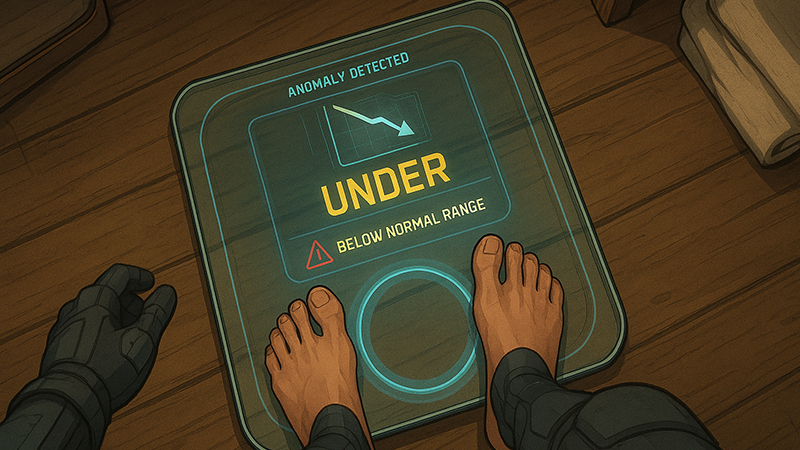
Cannabis users with CHS go through three stages:
- Prodromal phase
- Hyperemetic phase
- Recovery phase
1. Prodromal Phase
This phase can last anywhere from a few weeks to even years.
The symptoms include:
- Nausea upon waking up or in the early mornings
- Fear of vomiting
- Abdominal pain and discomfort
- Minimal or absence of compulsive bathing
- Normal eating pattern
Some people increase their cannabis consumption during this phase, thinking that it can help relieve their symptoms.
2. Hyperemetic Phase
Things get progressively worse during this stage.
These symptoms include:
- Intense, severe, and persistent nausea
- Uncontrolled and overwhelming retching and repeated vomiting, usually a whitish and watery vomitus
- Food aversion
- Decreased fluid intake, often with dehydration
- More frequent abdominal pain
- Weight loss
- Presence of compulsive bathing (multiple hot showers and baths throughout the day or long hot showers or baths lasting for hours)
The symptoms during this phase may also prompt several visits to the emergency room.
3. Recovery Phase
This phase begins soon after you quit cannabis. This phase can take anywhere from a few days to a few months.
This is characterized by:
- Gaining back your lost weight
- Eating and drinking patterns go back to normal
- Compulsive bathing disappears
You’ll start feeling better during this phase, but cannabis consumption can easily lead to the recurrence of your CHS.
Why Do Hot Showers and Baths Reduce Symptoms of Cannabis Hyperemesis Syndrome?
People with CHS often take multiple hot showers and baths throughout the day. The hot temperature helps relieve their nausea and vomiting. But once this habit becomes established, it quickly and easily becomes a compulsion.
The reason why hot showers relieve CHS symptoms may have something to do with the changes in the brain caused by THC.
1. Increases Core Temperature
THC affects our core body temperature in a dose-dependent manner when it binds to the CB1 receptors in the hypothalamus. This is the brain region responsible for controlling our body temperature. At low doses, THC induces hyperthermia. At high doses, THC causes acute hypothermia.
THC’s overstimulation of the CB1 receptors in the hypothalamus not only affects this brain region but the nearby structures as well, one of which is the brain center controlling nausea and vomiting. Dysfunction of the thermoregulatory center and low body temperature trigger nausea and vomiting, the classic symptoms of CHS.
Hot showers and baths increase the body’s core temperature. This counteracts the effects of THC on the hypothalamus and brain center for nausea and vomiting.
2. Activates Vanilloid Receptors
The high temperature also activates the vanilloid receptors found on the brain cells. When activated by a noxious stimulus such as pain and high temperature, the vanilloid receptor makes the brain cell less sensitive to the noxious stimulus. This results in analgesia or pain control. The vanilloid receptor’s activation also leads to decreased nausea and vomiting.
The receptor is also why applying topical capsaicin creams and balms on the abdomen relieves abdominal pain. The heat produced by the capsaicin activates the vanilloid receptors on the skin. This decreases abdominal pain and, at the same time, relieves nausea and vomiting.
In a way, heat helps the brain function better in controlling hypothermia which triggers nausea and vomiting.
Can You Use CBD for Cannabis Hyperemesis Syndrome?
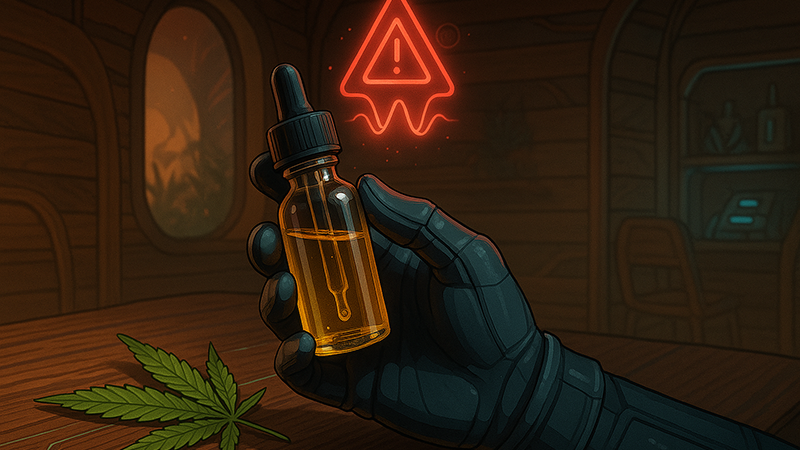
No. CBD is not recommended for anybody suffering from CHS.
Despite well-known antiemetic effects, at least one study showed that CBD worsened the effects of CHS [8].
Several other non-psychoactive cannabinoids are believed to amplify CHS symptoms as well, including CBG, CBC, and CBN.
Can Delta 8 THC Also Cause Cannabis Hyperemesis Syndrome?
Delta 8 THC quickly captured the interest of many cannabis enthusiasts. Derived from delta 9 THC (commonly referred to as THC), delta 8 THC also produces psychoactive, intoxicating effects. However, comparing delta 8 THC to delta 9 THC, the former offers a smoother and cleaner high than the latter.
So, is delta 8 THC still safe to use? Yes, it is. However, it is unclear whether delta 8 THC can cause CHS, but it’s certainly possible. Since delta 8 THC is derived from THC and stimulates the same receptors THC activates, we can assume that this cannabinoid may also contribute to the development of CHS.
How Do You Know You Have Cannabis Hyperemesis Syndrome?
Hot showers and baths that relieve nausea and vomiting are a classic sign of CHS.
If you suspect you have CHS, then you need to visit your doctor. In addition to your medical history, he’ll also ask you relevant questions to diagnose your condition.
These include:
- How long and how often do you use cannabis?
- How long have you had nausea and vomiting?
- Are your symptoms related to certain foods and fluids?
- Are you sexually active?
- Are you taking any medications that could be causing the symptoms?
- Are you using illicit drugs?
- Have you noticed some weight loss?
- Are you taking more hot showers or baths than usual?
- Do the hot showers and baths relieve your symptoms?
- Does using capsaicin creams relieve your symptoms?
Your doctor may also order several laboratory tests such as blood and electrolyte tests, as well as liver function and urine tests. Other tests include CT and MRI scans of the head, ultrasounds, x-rays of the abdomen, and a pregnancy test.
Be honest with your doctor, especially about your cannabis use.
When Should You Go to the Emergency Room for Cannabis Hyperemesis Syndrome?
CHS is characterized by recurrent, violent retching and vomiting.
If you develop these symptoms, go to the emergency room immediately:
- Rapid breathing and rapid pulse
- Sudden fatigue
- Unexplained drowsiness and sleepiness
- Sudden confusion
- Fainting or loss of consciousness
- Severe dehydration
- Dark or decreased urine output
How Do You Treat Cannabis Hyperemesis Syndrome?
Unfortunately, antiemetic drugs don’t seem to work very well in controlling CHS’s severe nausea and vomiting. CHS, according to one study, is resistant to antiemetic therapy.
However, the following medications may help manage other symptoms:
- Capsaicin creams
- Analgesics for pain control
- Intravenous solutions for dehydration
One study also suggests that anxiolytic and antipsychotic drugs also help improve CHS symptoms.
For complete recovery from CHS, you should avoid cannabis. Experts believe CHS is a permanent health problem that cannabis consumption can easily and quickly trigger.
How Long Will It Take You to Recover from Cannabis Hyperemesis Syndrome?
As mentioned earlier, your recovery period starts the moment you quit cannabis. This process can take anywhere from a few days to a few weeks. In general, you’ll start feeling some improvements in about ten days.
To truly beat CHS, you have to stop using cannabis. Resuming cannabis use could easily trigger the symptoms.
If you’re having a tough time breaking the habit, we recommend seeking addiction treatment.
Does Cannabis Hyperemesis Syndrome Have Lifelong Consequences?
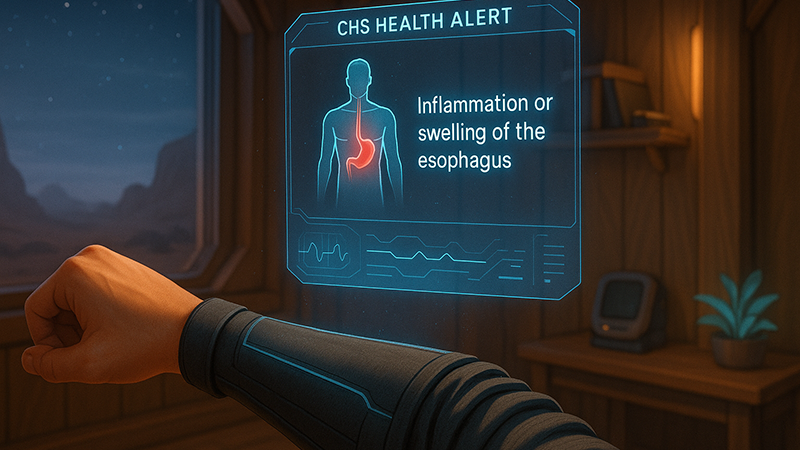
Again, we lack studies on the long-term and serious health complications of CHS.
According to the Cleveland Clinic, though, recurrent vomiting may cause:
- Tooth decay caused by stomach acid
- Dehydration due to decreased fluid intake
- Mallory-Weiss tears or tears on the esophagus caused by violent coughing, retching, and vomiting
- Inflammation or swelling of the esophagus
- Malnutrition due to reduced food intake
Final Thoughts — Understanding Cannabis Hyperemesis Syndrome
CHS is a rare condition caused by chronic and heavy cannabis use, including products that contain high amounts of THC. The cannabinoids overstimulate the brain cells, triggering severe nausea and violent episodes of vomiting. This condition also causes stomach pain.
Taking hot showers and baths helps control symptoms. Some medications may also help, but to truly control CHS, you have to stop using cannabis. This, for now, is the only known treatment for this condition.
FAQs on CHS
Do you want to know more about CHS? Then check the quick list below of the frequently asked questions about this syndrome.
1. Is CHS a Rare Disease?
Yes, CHS is a rare syndrome that seems to affect a small percentage of cannabis users. Its prevalence is highest among heavy, chronic users.
2. What is the Main Cause of CHS?
The exact cause of CHS is unknown, but experts believe it’s caused by prolonged overstimulation of the cannabinoid receptors, weakening their ability to modulate nausea and vomiting.
3. How Many People Have Died from Cannabinoid Hyperemesis Syndrome?
The exact number of people who died from cannabinoid hyperemesis syndrome is unknown, but a couple of studies have mentioned at least five CHS-related deaths [14,15].
4. How Do You Fix Cannabinoid Hyperemesis Syndrome?
Hot showers, hydration, and capsaicin creams help provide symptom relief, but the only way to fix cannabinoid hyperemesis syndrome is by fully quitting marijuana use.
5. Can You Ever Get Rid of CHS?
Marijuana cessation can get rid of CHS symptoms, but resuming use can easily trigger them again. The only way to completely get rid of CHS is to give up all marijuana use.
References Used:
- Parker, L. A., Rock, E. M., & Limebeer, C. L. (2011). Regulation of nausea and vomiting by cannabinoids. British journal of pharmacology, 163(7), 1411–1422.
- Chu F, Cascella M. Cannabis hyperemesis syndrome. [Updated 2021 Jul 17]. In: StatPearls [Internet]. Treasure Island (FL): StatPearls Publishing; 2021 Jan-. [2]
- Chocron, Y., Zuber, J. P., & Vaucher, J. (2019). Cannabinoid hyperemesis syndrome. BMJ, 366. [3]
- Habboushe, J., Rubin, A., Liu, H. and Hoffman, R.S. (2018), The Prevalence of Cannabis hyperemesis syndrome Among Regular Marijuana Smokers in an Urban Public Hospital. Basic Clin Pharmacol Toxicol, 122: 660-662. [4].
- Sun, S., & Zimmermann, A. E. (2013). Cannabis hyperemesis syndrome. Hospital pharmacy, 48(8), 650–655.
- Smirnov, M. S., & Kiyatkin, E. A. (2008). Behavioral and temperature effects of delta 9-tetrahydrocannabinol in human-relevant doses in rats. Brain Research, 1228, 145–160.
- DeVuono, M. V., & Parker, L. A. (2020). Cannabis hyperemesis syndrome: A Review of Potential Mechanisms. Cannabis and cannabinoid research, 5(2), 132–144. [7]
- Galli, J. A., Sawaya, R. A., & Friedenberg, F. K. (2011). Cannabinoid hyperemesis syndrome. Current drug abuse reviews, 4(4), 241–249.
- Lapoint, J., Meyer, S., Yu, C. K., Koenig, K. L., Lev, R., Thihalolipavan, S., Staats, K., & Kahn, C. A. (2018). Cannabis hyperemesis syndrome: Public Health Implications and a Novel Model Treatment Guideline. The western journal of emergency medicine, 19(2), 380–386. [9]
- Cannabis Hyperemesis Syndrome (CHS). (2024, October 18). Cleveland Clinic. https://my.clevelandclinic.org/health/diseases/21665-cannabis-hyperemesis-syndrome [10]
- Cyclic vomiting Syndrome. (2025, March 19). Cleveland Clinic. https://my.clevelandclinic.org/health/diseases/14894-cyclic-vomiting-syndrome [11]
- SAMHSA, Center for Behavioral Health Statistics and Quality. (n.d.). Key Substance Use and Mental Health Indicators in the United States: Results from the 2023 National Survey on Drug Use and Health. https://www.samhsa.gov/data/sites/default/files/reports/rpt47095/National%20Report/National%20Report/2023-nsduh-annual-national.htm [12]
- Angulo MI. Cannabinoid Hyperemesis Syndrome. JAMA. 2024;332(17):1496. doi:10.1001/jama.2024.9716 [13]
- Soota, Kaartik MD1; Lee, Ye-Jin MD2; Schouweiler, Katie MD2; Keeney, Matthew MD2; Nashelsky, Marcus MD2; Holm, Adrian DO2. Cases of Death Secondary to Cannabinoid Hyperemesis Syndrome: 2217. American Journal of Gastroenterology 111():p S1063, October 2016. [14]
- Nourbakhsh, M., Miller, A., Gofton, J., Jones, G., & Adeagbo, B. (2019). Cannabinoid Hyperemesis Syndrome: Reports of Fatal Cases. Journal of forensic sciences, 64(1), 270–274. https://doi.org/10.1111/1556-4029.13819 [15]
